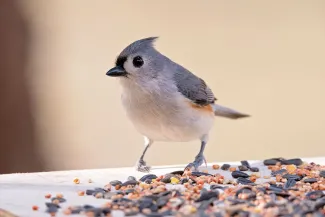Bird feeding tips, birdhouse basics and landscaping ideas have been brought together in an online guide, with the goal of helping Oklahomans attract birds to their backyard.

"This guide was created to help the hundreds of thousands of Oklahomans who watch birds around their home attract even more birds to their backyards," said Jena Donnell, information specialist with the Oklahoma Department of Wildlife Conservation. "We want to help a beginner choose a feeder or give longtime bird watchers ideas for updating their backyard landscape."
Like all wildlife, birds have three basic requirements for survival: food, water, and cover. Providing the proper combination of these resources takes planning but relatively little effort. Just a few additions or changes can transform your yard into an oasis for birds and other wildlife.
The scroll-through guide, available at wildlifedepartment.com, outlines bird feeder designs, seed choices, bird-friendly plants, nest box plans and suggestions for squirrel-proofing your feeders.
How can I keep squirrels from eating all my bird seed?
Many of us enjoy watching squirrels in our backyards but the expense of keeping up with a squirrel's appetite while trying to feed wild birds can be discouraging. Feeding limited amounts on a timetable, particularly during milder weather, can save you money. Offering squirrels food at an easy access feeder can free up your other feeders for your bird customers.
If this doesn't solve the problem and squirrels are still dominating feeders to the exclusion of the birds, there are other alternatives. Some bird feeders available commercially are "squirrel proof." If you don't want the expense of a new feeder, you can squirrel proof your own. With pole supported or hanging feeders you can attach a metal or plastic shield around the access points. Or suspend your feeders on wires between two supports (beyond jumping distance) and cover the wires with one inch plastic tubing. This makes for very insecure footing for even the acrobatic squirrels.
The challenge in solving the squirrel problem is keeping the feeders out of the jumping range while still close enough to cover needed by the birds.
More tips for attracting birds and a variety of other wildlife can be found in the Wildlife Department’s Outdoor Oklahoma Journal. Tips have also been compiled in the online Landscaping for Wildlife: A Guide to the Southern Great Plains.